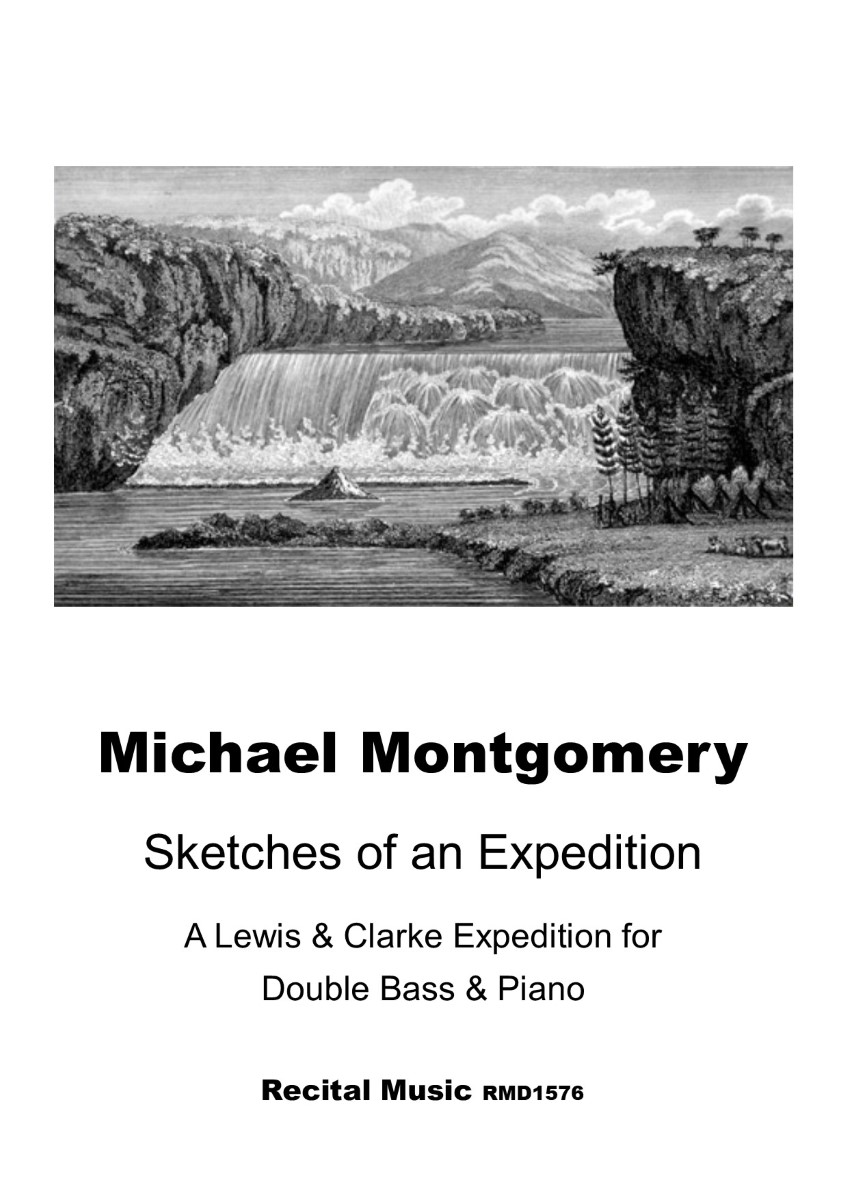Sketches of an Expedition
A Lewis and Clarke Expedition

| Product Code: | RMD1576 |
| Publishers Number: | RMD1576 |
| Series: | |
| Published date:: | Nov-24 |
| Language: | English |
| Condition: | New |
2. The Plains Indians
3. Sacagawea’s Song
4. The Continental Divide
5. The Columbia River Gorge
6. The Pacific Ocean
He now lives in the Ozark Mountains of Arkansas, where he teaches double bass at the University of Arkansas Fayetteville and privately in his home studio. Michael has composed numerous works for young double bassists (including over five dozen short bass quartets for young students) which are published by Recital Music and two American publishers.
His articles about bass performance, literature, and teaching have been published in American Suzuki Journal, Bass World, and Pastoral Music.
Sketches of an Expedition by Michael Montgomery is a lively and engaging suite of pieces for the intermediate bassist. Primarily in bass clef, the music…
The Lewis and Clark Expedition, dubbed the “Corps of Discovery”, commissioned by president Thomas Jefferson to survey the territory a young United States had just purchased from Napoleon in 1803, undertook one of the most significant and celebrated adventures in American history, exploring during the course of their travels all the lands between the Mississippi River and Pacific Ocean. This little suite offers six musical snapshots of episodes that occurred during the excursion.
1. The Mighty Mississippi – The Expedition Begins – May 14, 1804 – The voyage set out from Camp Dubois on the Mississippi River near the mouth of the Missouri River. The tranquil ambiance set forth in this musical vignette echoes the sombre movement of the current and great depths of this expansive flowing waterway over which the party slowly made its way upstream.
2. The Plains Indians – August 3, 1804 – Corps of Discovery met with representatives from several of the tribes of Indians who made their home in “The Great Plains,” the great expanse of prairie, steppe and grassland that lies to the west of the Mississippi River and east of the Rocky Mountains.
3. Sacagawea’s Song – November 4, 1804 – The Shoshone wife of French Canadian fur trapper Toussaint Charbonneau, Sacagawea, was hired as an interpreter and guide. The only female to travel with the troop, this musical portrait attempts to capture her more delicate feminine qualities.
4. The Continental Divide – August 12, 1805 – The mood of this movement reflects the anticipation of expedition leader Meriwether Lewis as he ascended the final ridge toward the Continental Divide, where he fully expected to see flatlands and the Columbia River, upon whose currents they could float to the Pacific. He was soon to be disappointed to discover instead a tremendous mountainous expanse between his entourage and their destination.
5. The Columbia River Gorge – October 16, 1805 – Columbia River, calm at this moment of their first sighting of it, offered the travellers no indication of the difficulties that awaited just downstream in the Gorge – Celilo Falls, the Dalles and Cascades beyond them – difficulties which led Clark to write in his journal that the river was at that point “an agitated gut swelling, boiling and whirling in every direction.” This vignette deals with the peacefulness of the day at hand, the “calm before the storm.”
6. The Pacific Ocean – Journey’s End – November 7, 1805 – William Clark, when he at long last caught sight of the ocean, wrote what is considered his most famous journal entry: “Ocian in view! O! the joy.” The final musical sketch revisits the many dangers and obstacles the companions had encountered in order to finally get to this point.
R.R.P £7.50
Our Price: 6
Digital Download – PDF
Shipping costs: No shipping
Other books in this series
You might also like
-
12 Waltzes for Double Bass
£6.80 -
3 Pieces for Double Bass and Piano
£10.00 -
3 Random Rambles
£6.80 -
6 Christmas Carols
£10.00














